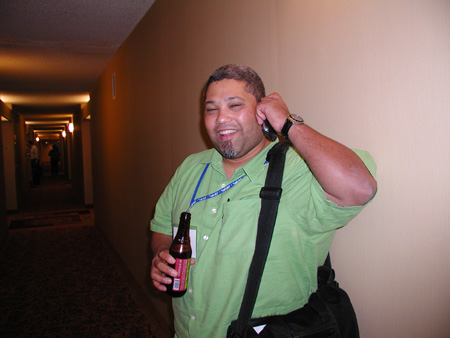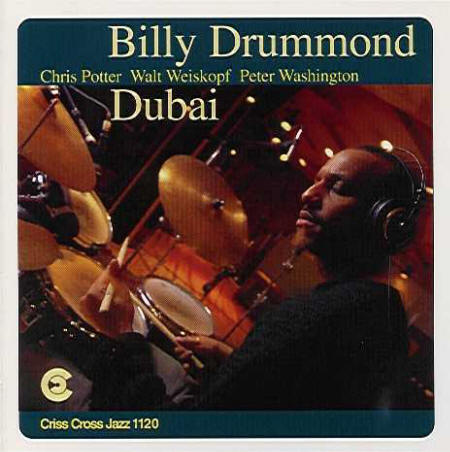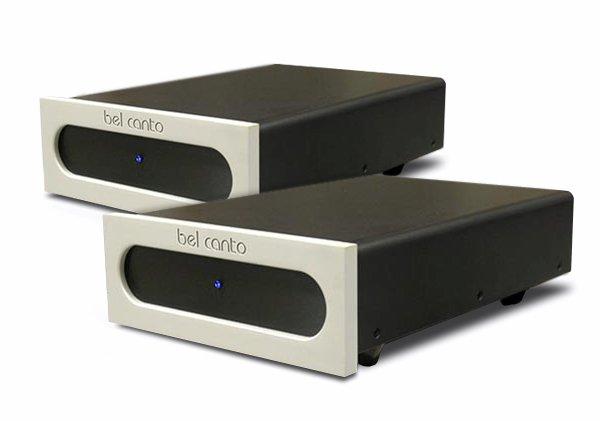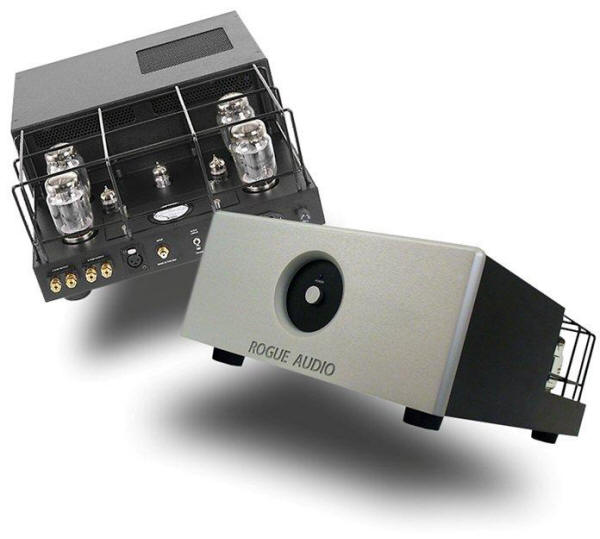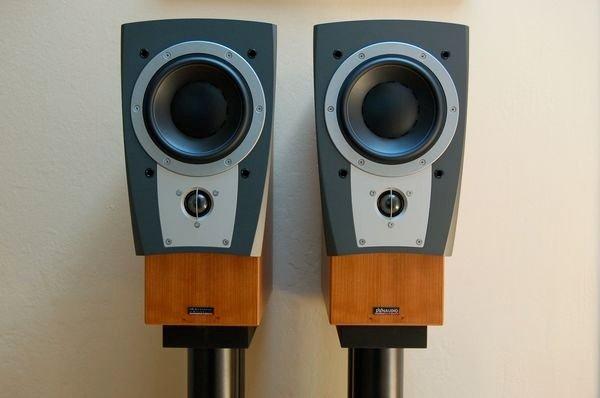|
You are reading the older HTML site
Positive Feedback ISSUE 53
Radio Free Chip: The Passing of Life and Time... and the Bel Canto REF500m and the Rogue Audio M-180 amplifiers
HELLO, I MUST BE GOING… I thought I would try and sneak back into Positive Feedback OnLine as everyone made their way—eternally hopeful—to the annual CES Show in Vegas, by returning to my RADIO FREE CHIP format; perhaps make a manly effort to include some gear-oriented follow-ups, amongst my other ruminations, wherein I can report back to you on fresh experiences of two drop dead amazing amplifiers from Bel Canto and Rogue Audio. Why have I been gone so long? Oh, I've had other things on my mine. John Potis passing around XMAS-time in 2008 surely took a lot of wind out of my sails, as we were buddies and shared a lot of phone time talking at length about audio, music… our daughters… just about anything but politics, which could get kind of dicey. And shortly after John checked out, my mother began her long goodbye, which was all-consuming. She passed away on March 24, 2010… least ways she got to see one final spring.
I've been dealing with family and health issues since then, and while I missed all of my friends out there in the audio obsession zone, I was quite pleased with my own audio rig, and didn't feel much enthusiasm for tearing things up and brining in a lot of new gear, curious though I might have been. Which is why the gear I am dealing with this time out is gear I have reviewed before and have nurtured an enduring passion for—enthusiastic enough a long-term fan and user that I wanted to hear if subsequent upgrades got me nearly as excited. In any event, man does not live by audio alone… sometimes he requires a beverage. I guess the point I was trying to make about my man Potis, was that he was someone I could share my thoughts and feelings with—and to me, nine-tenths of the joy of audio is in sharing it with others.
So while I have been out of the loop, I haven't been entirely out of touch, and I want to offer a shout out to my brothers in aural delights, Wes Bender (above) and Billy Drummond, who feted me on their home turf for some hard core listening, and I really enjoyed experiencing their singular sense of synergy and perspective. Wes had a truly cosmic Rolls Royce-scaled system in his downtown Brooklyn apartment, featuring some amazing full-range Hansen Loudspeakers (the 3-way Prince V2 model), which gave me a bad dose of transducer envy… but I'll be damned if Wes wasn't just as blown away by the acoustic qualities of the rooms in my own World War One-era crib, with their hard wood floors and solid plaster walls—I mean all things being equal, gear is great, but having a good room is half the damn battle. And Billy Drummond, one of the truly great modern jazz drummers, well, he just made me laugh. "Now I want you to be really critical, Chip." Uh, gee Billy, it all sounds really good. Not surprising, seeing as how Billy is a LISTENING DRUMMER of the first rank, with a great ear for the collective balance of an ensemble, a refined touch, and a lovely sense of the melodic possibilities of meticulously tuned drums and tastefully arrayed cymbals. Given our shared-obsession for cymbals, I was not surprised to hear how musical each of the three systems in his Jersey home were, and how happy I was to linger with each set-up, particularly his Vandersteen 3 rig. Want to hear what a great jazz drummer sounds like? Check out one of Billy's early dates as a leader, the beautifully recorded Dubai (Criss Cross 1120), featuring the resoundingly full-bodied bass of fellow audio freak and virtuoso team-player Peter Washington, and saxophonists Chris Potter and Walt Weiskopf.
I also was warmed by the affection of several readers, who were kind enough to drop me a line and let me know that they missed me. I enjoyed a spirited dialog with several of them, an example of which follows forthwith… Another Satisfied Customer Dear (C)hipster, I haven't seen anything from you in quite a while. I hope you're doing well and still playing and listening. Four years ago I bought a pair of Dynaudio C1's from Audiogon. This was based entirely on your review and I had never heard any Dynaudio speakers before. There we're just as you described them, save for your tube amps vs. my McCormack DNA 1 rev A gold. Anyway, my local audio Sherpa sold me his beloved Vandersteen Wood Quatro Signatures. They changed everything, and I'm still dialing them in, but they are wonderful... anyway, I hope you & your family are doing well. I know you miss your buddy John. Your love & admiration for him came through in your tribute to him. I miss your one liners buried in those 2000 word reviews. Bill McDonald Two thousand word reviews? TEN THOUSAND WORD REVIEWS is more like it. When I fall out of bed, before my feet hit the floor, there are two thousand words. Sometimes you need Indiana Jones and an archeological dig to unearth the one liners. In any event, thanks for thinking kindly of me and of John, and I'm surely pleased that the Dynaudio Confidence C1 loudspeakers brought you pleasure commensurate with the joy I've experienced from them. They have this distinctive purity and sweetness, a warmth and depth of field, a sense of venue and crystal transparency, a timbral accuracy and dynamic impact that belie their diminutive stature and which always brings one into a deeper relationship with the music. As for the Vandersteens, my congratulations—your Sherpa did you proud, although I surely hope you have held on to the Confidence C1. I have long lusted after those Quatro loudspeakers, as they embody many of the qualities I cherish in good monitors, but with that extra gusto dunk you expect from full-range loudspeakers: frequency extension and dynamic range—that sense of physical presence you get from being able to move more air. Attributes which can surely captivate an educated listener, when after a period of time, as your drive your monitors harder and harder, it suddenly dawns on the audio pilgrim that, "Son, you need MORE SPEAKER." I suppose if I were to characterized the difference between the Confidence C1 and the Quatros, it would be quantitative rather than qualitative; the difference between punch and slam, the latter being the purview of a good floor-standing design. Still, in the right room, when properly set up, the Vandersteen Quatros can image like a good mini-monitor. Likewise, in the right room, with appropriate amplification, your guests will be wondering where you hid the sub-woofer with the Confidence C1. You say you are still dialing them in? You might want to pay your Sherpa to slide on by over with his frequency analyzer and bed-bug sniffing dog Moishe, to deploy the fine-tuning attributes of the Quatro's integral sub-woofer with its adjustable frequency cut-off and Q. A Vandersteen dealer of my acquaintance has long prided himself on being able to dial in Vandersteen Fives and Quatros so that the bass is experienced as a resounding foundation for soundstaging, with spatial dimensionality and a realistic leading edge to the transients—not as a chocolate thick shake. I've heard Vandersteens tuned tantalizingly close to a flat frequency response, and believe me that is big fun. Of course, while Quatros have the flexibility to work well in most acoustic environments, because of room coupling, some rooms, such as mine, are just better suited to a monitor. And believe me, I am not trying to front as if I would be averse to the pleasures of a good floor-standing speaker, but as I've already stated, visitors to my den of iniquity are always wondering where the sub-woofer is, so...well, you get the idea.
There are times, when channeling Vlad The Impaler, I find myself pushing the system a little harder than it needs be, as I did the other night in listening to Stravinsky, where the big bass drum hits broke up a tad, but that is on me, not the gear. The opening reed bits are more softly inflected, so by the time the percussion belches forth, you realize, oops, driving it too hard. Or maybe I need more speaker. Or more room. Or a house in the Catskills. But generally, I am more or less awash in bliss from front end to back end and all points in between. As far as checking out newer, bigger, more resounding loudspeakers, well, I'm happy with what I'm hearing, and I'm not really set up to deal with bigger, heavier speakers, nor do I have the room to stash their shipping crates. I have plans to explore some full-range loudspeakers in the near future, but probably in a dealer's showroom or someone else's crib. I'll probably delve into some pre-amps and digital front ends at some point in the near future, but for the moment, I am enjoying what I have, and am quite thankful for that… and for friends like you... A SINGLE MALT EPIPHANY… I just knocked off the final remnants of an ancient bottle of single malt (compliments of high value/high end audio impresario Roy Hall of Music Hall, and Epos-Creek distribution fame) that had been mellowing in the back of Mother Hubbard's Cupboard for quite some time now, and took this out-of-body opportunity to break open a fresh purchase from Amazon.com, the most recent new release by guitarist Jeff Beck, Emotion & Commotion (Rhino Records) which I found enormously moving. It seems as though every ten years or so I have a profound Jeff Beck experience of some type, which invariably leaves me shaking my head to the refrain of "My God, I'd forgotten how, how…how completely original he is—he doesn't just play the guitar he becomes a guitar, and the music seems less a product of strings and amps, as something that simply emerges, like a voice, from a recess deep inside his body." I can recall seeing Beck open for the second edition of the Mahavishnu Orchestra in Rochester, New York on their American Tour of 1975. Jean Luc-Ponty had departed by then, though I was unaware of that before the concert. My experiences of John McLaughlin's original Mahavishnu were such that I thought I would patiently munch on Beck's appetizers before digging into McLaughlin's main course. Well, did I ever have things bass-ackwards. Beck was still mainly a Gibson Les Paul man in those days, and he came out with a wall of Fender Dual Showman Amps (a la Dick Dale), and a truly ass-kicking band featuring Max Middleton on keys, Wilbur Bascomb on Fender bass and the great Bernard Purdie on drums, playing materials derived from his breakthrough jazz-rock fusion epic, Blow by Blow. Then, as now, I marveled at how hard the band grooved, and how effortlessly Beck elicited the most uncanny sounds from his guitar. Do you think the years have addled my memory or added unsubstantiated enthusiasm to my recollections? Well, have you ever visited Wolfgang's Vault, Wolfgang being the late rock impresario Bill Graham, a Holocaust émigré, mambo enthusiast, thespian (as Lucky Luciano in Warren Beatty's Bugsy) and a true trailblazer in the music business. Wolfgang's Vault offers web surfers an extraordinary archive of gold standard concert performances going back 30-40-50 years. You can listen to any and all for free, or download your faves as .mp3 or .flac files for a reasonable fee. They just happen to have a document of Jeff Beck's performance with the Middleton-Bascomb-Purdie band from 5-9-75 at the Masonic Temple Theater in Detroit, Michigan, and it is a motherfucker. Subsequently I heard Beck open for Stevie Ray Vaughan at Madison Square Garden in 1989 with Terry Bozzio on drums and Tony Hymas on keyboards, and headline at Jones Beach on Long Island with a resourceful Jennifer Batten as his second guitarist. By this last concert he had abandoned his Les Paul in favor of a Fender Stratocaster, his pick in favor of his fingers, allowing him to roll the volume knob with his pinky and to ride the whammy bar in such a musical and intuitive manner he often sounded more like Pharoah Sanders eliciting a wild array of overtones from a tenor saxophone than someone plucking strings. My enduring impression of Beck as something of a wind player has evolved to an ever greater degree on Emotion & Commotion. He has refined his lyric sensibility to such a high degree that he damn near transcends all notions of electric guitar, and vaults into the realms of pure vocal bliss. Every note he plays is sung. The manner in which he deploys his instrument in chamber and an orchestral settings perfectly complements his vocal guests, and said vocalists evoke images that suggest everything from opera and Mongolian throat singing to the art song and the blues shout.
The recorded sound is stunning, and serves to enhance and amplify the humongous impact of these large-scale arrangements, and as scared as some of you might be at the merest hint of orchestral treacle, worry not—this is quite unlike anything you've ever heard. Oh perhaps your basic Concierto de Aranjuez, but this is not Julian Bream on an old acoustic Hauser, but Jeff Beck on a heavily amplified Fender Stratocaster. Some people with an ear for thrash will be baffled by this recording and question the appeal for Beck of music so off the beaten path of rock. Bottom line? Jeff Beck has never stopped growing, never stopped stretching and never stopped pushing the limits of what an electric guitar is capable of; not necessarily a louder sound, but a bigger, more fluid sound—a more HUMAN sound. I won't try and break down every song for you, nor mitigate the experience of discovering the sounds of surprise for yourself. Let's just state with some finality, that this is very soulful, very original—Jeff Beck has crafted the most personal, exploratory, enigmatic recital of his career; music that is neither rock nor jazz nor blues nor classical, but something border-less and damn near child-like in its purity of expression. Just wander over to iTunes and download "Over the Rainbow" if you think I'm jiving. Jeff Beck feels as though he's just revving up his engines for another half century of fresh sounds, and Emotion & Commotion is one hell of a bold start.
THE CRABBY NEBULA OF AURAL DELIGHTS... In the meantime, given how a sense of personal loss seems to animate my thoughts these days, I wanted to pass along my regards to high end audio pathfinder J. Gordon Holt, who passed away on July 20, 2009. Perhaps we come a little late to the game, but I wanted to put my two cents in as to why he continues to motivate me, and to suggest reasons why those of you within range of my voice might be inspired to knock down some single malt, fire up your bong or sacrifice a goat on the altar of system synergy. Gordon remains, to me and countless other pilgrims, a tribal elder of high-end audio, and he made a compelling case for it being something more immersive and all-encompassing than a mere hobby. From time to time, when contemplating the glory of my audio rig, and losing myself so totally in the transformative power of music, J. Gordon's presence manifests itself. We were hardly what I would characterize as tight, but over the years, I always enjoyed our passing encounters, in the flesh and through the medium of cyberspace. As with so many others, he got me thinking more deeply about the experience of listening, both in the critical mode, and in moments of blissful, indulgent surrender. To those audio pilgrims who cherish the delights of live music, and for whom the accurate, believable reproduction of acoustic instruments in their natural habitat (resonant, reverberant, dimensional rooms and halls) remains something of a holy grail, J. Gordon Holt remains our grumpy John The Baptist, a self-sufficient crab nebula of aural delights who spun off countless planetary systems of subjectivist high end audio handicappers in his wake. Emerging from an epoch in which the leading lights of hi-fi journalism such as Julian Hirsh confounded music lovers by their insistence that measurements were the objective be all and end all for informed judgment about audio gear, J. Gordon Holt ushered in a brave new world of audio insight in which people actually listened to music and to their gear, endeavoring to describe what they heard. Praise the Lord.
I can recall talking at length with John Potis about our formative years as audio tadpoles, and how flummoxed we invariably felt, having plowed our way through yet another turgid Julian Hirsh review, only to take a money shot between the eyes with nary an inkling about how the gear under review actually sounded. I gather that Julian was an engineer by training and inclination, and as such he was a high priest of the objectivist creed—thus the test bench was the sacramental alter at which he worshipped. We don't wish to jump up and down too enthusiastically on Julian's final resting place, because no matter his limitations by our lights, he was nevertheless an esteemed audio diva who made a huge contribution to the growth and popularity of hi-fi. However, for J. Gordon Holt, coming as he did into the temple and kicking over the tables of the test-benchers, the actual experience of music was the be all and end all of our devotion to hi-fi gear, and to him the kingdom of heaven lay not without—attainable only through the intercession of some objectivist priest with an oscilloscope—but WITHIN, a product of our own ears, of our experience of live music, and the desire that a good audio system might put us tenth row center, without any untoward colorations or sweetening or parlor tricks. To the degree that audio gear portrayed an accurate, natural, believable perspective of recorded music, and erected no impediments between the performance and the listener, it offered... AUTHENTIC HIGH END AUDIO REPRODUCTION. Can I hear an amen? In a sense, as the curmudgeonly but loveable founder and prophet emeritus of Stereophile, J. Gordon Holt was largely responsible for the very notion of high end audio, and for championing a subjectivist approach to gear, because he was, first and foremost a music enthusiast, who began lugging around his own reel-to-reel tape recorder and doing live recordings almost from the very moment that technology became available to the general public after World War II—live music was his ultimate reference... a sticking point for many literalists who tended to read too much of their own prejudices into J. Gordon's epistles from on high. My sense of what Gordon actually meant is that if you don't know what real musical instruments sound like; if you do not have tangible experiences of what real instruments actually sound like in a variety of acoustical spaces, how can you hope to have an unimpeachable reference point as to the accuracy and audio verity of the gear you are listening to, or the relative merits of the recording process itself? The point being not that you couldn't listen to or enjoy music that never had a real acoustical life of its own, or that was processed or amplified, but that if a sound system couldn't deliver the true sound of an acoustic piano, of the human voice, or of chamber and symphonic music in acoustical spaces, how could you really trust it to deliver the snap, crackle and pop of rock? Sure, you could rock out to a pair of twin fifteen inch hooters, driven to orgasmic levels by the heaving pelvic thrusts of a huge muscle amp capable of delivering an aural lap dance of Biblical proportions, but if it was wildly distorted or if the jacked off highs and thunder-thigh lows covered the midrange, it hardly qualified as an accurate music reproduction system. Is that a room analyzer in your pocket big boy, or are you just glad to see me? In other words, at the risk of making the obvious superfluous, if a sound system boogies along on rock but sounds like home made shit on an acoustic piano, it is subjectively dreadful, and you sir, are a crass, classless nimrod. But if it gets the midrange right, if it delivers the goods on an acoustic piano and the human voice, it may be reasonably expected to make a good accounting of itself on rock music. And if you subjectively desire more dynamics, frequency extension and sheer impact, well then you might just need more speaker. Likewise, as your gravitate towards more sophisticated gear, better suited to your evolving musical tastes and expectations—not to mention the anomalies of your listening room—then you may proceed boldly and with confidence from a solid foundation of critical listening to accurate, musical components. All of which bespeaks subjective qualities, and rewards informed judgments based on an experience of live music and real instruments, be they acoustic or electric. None of which matters if you are an Audiogon Slut, who changes components more often than you change your underwear, and thus never have a system together long enough to make any informed judgments, save to impress your friends with expensive new toys, and to bother me in the middle of the night with e-mails wondering why your system fails to satisfy. Grow up, motherfuckers. (PS: Don't get me wrong: I purchased a Kyocera cassette deck, a Luxman graphic equalizer and a Lexicon Universal player on Audiogon, and I am a better man for it.) I got to take the measure of J. Gordon Holt a little bit during my tenure at Stereophile, and got to hang out with him in Santa Fe during an editorial conference back in the good old days, when Larry Archibald, a lovely gentleman, still owned the magazine, and flew out all of the contributing editors for workshops and festive fiestas to build team chemistry and inculcate values and clear expectations. I found J. Gordon to be a charming, irascible fellow, which tells you all you need know about my own unimpeachable social skills. I fondly recall sitting down to hoist a few glasses of wine one-on-one with Gordon, when the conversation turned somehow to the first movement of Brahms First Symphony. "I defy anyone to actually sing the opening of that work," Gordon proclaimed, throwing down the metaphorical gauntlet; so challenged, I jumped right into the deep end of the pool and took a whack at it. "Not bad," he chuckled. Later in our conversation, I wondered why he and other elders took such a dim view of what I have come to refer to as the neurological and gastrointestinal components (interconnects, speaker cables and AC cords). "Well, it's like this, Chip. Too many people tend to use cables as corrective band-aids, and pricey ones at that. Approaching things that way is putting the cart before the horse. You need to start off with a solid core of accurate, musical components—to get the midrange right—and once you've accomplished that, and only at that point, does it make sense to introduce 'tweaks' into the equation." That made sense to me, and over the years, as I gained more experience with gear, and learned more about the distinct aural characteristics and anomalies of my own listening space, I took Gordon's sound advice to heart, and deployed a variety of tweaks to dial in the perspective I liked, to fine tune and articulate the overall sound, and to enhance how the system coupled with my room. My goal? To optimize the life-like experience of dynamics, dimensionality, timbre and sound-staging from my sweet spot (and off axis as well).
But following Gordon's advice, I did not use neurological and gastrointestinal components as band aids or tuning devices, but as enhancements, and as such, my combination of dedicated 20-amp lines, Equi=Tech balanced power isolation transformers, Monster Cable voltage regulation, and a choice selection of JPS Labs and Acoustic Zen interconnects, speaker cables, and high-resolution Uber-AC Cords did not alter but rather enhanced the listening experience—delivering on the true potential of all my components , individually and as a synergistic system. "If the midrange isn't right, nothing else matters." Gordon's words continue to resonate with me, though perhaps never so much as after I was treated to a revelatory Carnegie Hall symphonic experience by Bill Lowe of Audioquest (another lovely gentleman and high end audio innovator) some years back. We heard Pierre Boulez and the London Philharmonic perform Stravinsky's Petrushka and the Schoenberg Piano Concerto (with Daniel Barenboim no less) from Harry Potter's roughly 10th row center seats, at which point in time I finally—definitively—was able to reference and internalize the idealized aural perspective which animated J. Gordon's aural pilgrimage, and defines all high end audio aspirations. (Oops, did I say Harry Potter? I meant Harry Pearson, another icon of the subjectivist school.) Towards the end of his life, Gordon became more and more fascinated with the home theater experience, an area in which I was, and remain woefully inexperienced. By and by, I lost track of his ruminations in The Absolute Sound, though in my last e-mail exchanges with Gordon, I believe I was reacting favorably to a piece someone had brought to my attention in which Gordon addressed mixed feelings about audiophile enthusiasm for the iPod. Whatever I said, it set off his internal car alarm, and he came back at me like Vesuvius reaching for Pompeii (if I may reference our old friend Lord Buckley for a nanosecond). Gordon marked me for a Luddite, and was angrily dismissive. John Potis and I shared a chuckle at his response and Otis wondered what I could've said to set him off that way? I allowed as how I didn't take it personally; rather I found it rather amusing and was impressed anew by JGH's undiminished passion for whatever was on his radar screen at the moment. In writing back to him, I referenced his objections to my reasoning and thanked him for getting back to me; all in all, the tone of my response was meant to kill him with kindness and let him know that he could flail away as much as he liked, and that we were still mishpucka. His response was both conciliatory and prickly, and if it inspires any of you to preach the word and to fight the good fight, well then, it is well worth sharing, and bears repeating to all those who love the experience of being immersed, enveloped and transported by inspiring performances of beautifully recorded music on great sounding gear.
Chip,
HP and I agree (for once) about the joys of
acoustical space, but face it, we're both well into fogeydom. We've actually
heard concerts at Symphony Halls in Boston and Chicago, and found them to be
memorable spaces. But we have little company these days.
I have lots of 78-rpm discs whose sound, even
including inherent limitations, is vastly superior to the best from MP3.
TO EVERY AMP, THERE IS A SEASON, TURN, TURN… One of the pitfalls of being a so-called audio critic, is that no matter how comely the object of your affection might be, there always seems to be an even prettier girl to ogle just around the bend. Our first inclination is to hop right in our pick-up and make for the county line—MUST HAVE BETTER GEAR. However, a good rule of thumb is out of ear-shot, out of mind. I didn't think I could endure letting go of this particular Luxman Universal player I enjoyed a conjugal visit with a year or two back, but we enjoyed a happy ending by copping a Lexicon RT-20 Universal Player from an Audiogon trader for $750. It seemed a tad bright when I first plugged it in, but inside of a week it had mellowed out considerably, and much to my chagrin, I realized that the son-of-a-bitch was for all intents and purposes, brand-frigging new when I copped it. There was some controversy around that time concerning the RT-20's replacement in the Lexicon line, the RT-30 (a universal player with upgraded Blu-Ray capabilities), and how little it purportedly deviated from the Oppo foundation upon which it was based for a MSRP of $3500 (or roughly four times the base price of the Oppo). The debate being, how much more should one expect to pay for upgrades, and what constitutes a real value in tweaking? When it was originally introduced, the RT-20 had an MSRP of $5000 and by the time she was discontinued and the last litter of factory sealed boxes came on the market, retailers were blowing them out the door with a warranty for $1000-1200, a damn good deal if you were on the market for a universal with a high end audio pedigree. The point being, that for under a grand the RT-20 is a damn good deal. Might fancier, more up-to-the-moment universal players offer better resolution and features? Without a doubt, but until I finally dump my old CRT picture tube and get a modern plasma or LCD, I'm not quite ready to evaluate the new generation of Blu-Ray equipped Universal Players. In any event, money I might have spent on boy toys I have been directing towards fixing up our kitchen and sundry things affecting my wife's sense of happiness and well-being. I'm close to plunking down on a modest 42-inch plasma and joining audio-video types in late 20th century revelry, though notions such as 5.1 and 3D leave me as cold as an Eskimo's tukhus. Also, being a rational being, and only a part-time audiophile, at a certain point, you count yourself lucky to enjoy your 40 acres of high resolution Valhalla, and realize, professional obligations notwithstanding, that it is not necessary to keep changing and upgrading, changing and upgrading, fun though it may be. I mean, you know what? My audio system is pretty bloody good. I should chill out and enjoy what I have. In fact, I do enjoy what I have, which is one ass-kicking rig—it is more than good enough. Alas, high-end audio manufacturers do not have the same luxury as consumers; they cannot afford to linger and simply take bows on their achievements. Like sharks, they must keep feeding, keep moving forward, ever forward, or die—new refinements inevitably begat new customers. Which is why, month after month, scribes on a regular high end audio itinerary, seemingly get caught one-upping themselves in ever-escalating spasms of enthusiasm. Remember that out of this world Manley Steelhead Tube Phono Preamp that offered the finest vinyl playback we'd ever heard? Well, then we discovered a Boulder 2008 Phono Preamp that was even better! Out of this galaxy? What is the qualitative difference between no-compromise and cost is no object? What's the next plateau, an alternate universe? No the scribe in question isn't playing fast and loose with enthusiasm, nor is he as lewd and easily seduced as Randy Pan The Goat Boy. It's just that when you are a critical listener on the professional rodeo circuit, in a highly competitive marketplace, you damn well better believe something is going to come along which redefines your expectations and blows your head clear off at the root. What then of gear you are already familiar with? Gear you have spent thousands upon thousands of hours carefully ear-balling? Gear you have already proclaimed your undying affection for? Gear you have influenced other folks to purchase? Gear you and they are already quite happy with, thank you very much.
Well don't blame us, blame those manufacturers who keep upping the ante, who continuously define and redefine the outer reaches of performance and resolution. That is what they are in business for. That is why they remain in business. That is what inspires them to keep striving, to keep refining, to continually strip away veil upon veil of any and all things which detract from one's pure enjoyment of the music. Having said all that you might very well want to issue a bench-test warrant for esteemed audio designers John Stronczer of Bel Canto and Mark O'Brien of Rogue Audio. We thought we were already deeply in love with the past iterations of their superlative amplifiers, such as the Ref1000 and M-150, but apparently, as per the venerable Benny Goodman-Charlie Christian-Count Basie-Jo Jones collaboration, "I Found A New Baby." Throughout much of 2010, preoccupied as I was with more pressing emotional issues, I went back and forth between the new Bel Canto REF500m and the Rogue M-180 monoblocks, and never found myself wanting in any way shape or form. However, as regards the pistols at twenty paces, dueling amplifiers, blind A/B shoot-outs so many audio fans crave, well, that's not really a practical critical strategy. Comparing the sound of an ice cold amp to one that has been playing music for an extended period of time is pretty pointless; more so when the audio designers take very different paths to achieve their musical goals—which are to strip away all manner of noise and artifice and colorations which stand between the listener and the experience of the music. However as warmer weather approached, I spent several months treating the Bel Cantos as my Spring-Summer Amps, while with the chill onset of post-Labor Day weather, the Rogues became my Fall-Winter amp of choice… to every season there is a reason… turn, turn, turn… In both cases, while I found little to quibble about with their performance (and I was frankly startled by the rock solid stability of the M-180's tube bias after several months in hibernation), putting some extended hours on these fine musical instruments only brought the bloom of their impressive musicality to full flower.
The Bel Canto REF500m monoblocks benefit in particular from a good solid, extended burn-in, and I have been advised by more than one fellow traveler that once on, it is best to leave them on, as they are exceptionally quiet and efficient, run remarkably cool and draw relatively little power when just sitting around all day, waiting for Daddy to come home and take them for a walk. Likewise, the Rogue M-180s, when wakened from their deep sleep seemed a tad constrained (particularly in the top end) until all the components had a chance to burn in and run for a few hours, let alone for the two-three days I kept them going continuously with some sort of music signal; at which point, I again checked the bias for each individual tube, and discovered that there had not been any drift whatsoever—pretty rocking engineering quality. I was originally inspired to approach these amps anew in the spirit of a follow-up. I had originally reviewed the Bel Canto Ref1000 way back in Positive Feedback Issue 38 at the behest of John Potis. As I wrote at the time: "John has always had a passion for the elegant sonic signature of low-powered tube amps (such as the Art Audio Carissa, the Canary CA 330 and the Opera Audio Cyber 211), whereas I've always been drawn to the dynamic possibilities of power, and so when he began speaking with something approaching real reverence for the REF1000's I took heed. He spoke enthusiastically of their seemingly limitless reserves of power, their tube-like warmth and most significantly what he described as a real sense of "presence" in their portrayal not only of small musical details, but the totality of a musical presentation." I loved the warmth and power and accuracy and dynamic ease of the Ref1000, and was taken by the tube-like characteristics which held John Potis spellbound.
As regards the Rogue M-150 monoblocks, which I reviewed in Positive Feedback Issue 36, I had over a period of some years, critiqued several Rogue pre-amps and amplifiers including the M-150 monoblocks' predecessor, the Rogue Magnum M-120 monoblocks back in 2002 for Stereophile. Though superficially similar, the M-150s represented a substantially different amplifier, with a completely new output section, individual biasing for each tube (instead of cathode biasing), a KT-88 based platform instead of 6550's (though users could bias the amp to accept either tube, as well as KT-90 and EL34s), and a transformer-coupled input (for single-ended or balanced operation). The M-180 monoblocks proceed from a KT-90 platform, building upon the M-150's advances with vastly decreased noise, greater dynamic range, accuracy and enhanced transparency due in good measure to a fifty percent increase in power supply storage; different input circuitry and a series of power supply mods; the use of higher performance PRP resistors at several critical signal path junctures, as well as the use of polypropylene bypass caps and Hex Fred high-speed diodes for the bias supply; a fancier selection of Cardas binding posts, Cardas input wiring, and Cardas RCA jacks; and upgraded small signal tubes Likewise, the REF500m's features an advanced new input stage, fully-regulated low-heat, ultra-efficient switch-mode power supplies and class-A analog output control circuitry, while custom power supply rectification and filters increase the power supply's capacity for energy storage while lowering the noise floor. And as writer Guido D. Corona detailed in his thorough-going analysis of the Bel Canto REF500m monoblocks' design details and performance parameters (Positive Feedback Issue 50), the very heart and soul of this new Class D switching amplifier design, is the latest version of the B&O ICEpower 125ASX2 power conversion module in a bridged mono configuration—a more advanced design than that of amps featuring the older generation of ASP modules. Given the pleasure I took in listening to music with the Ref1000 and M-150, I was disinclined to move on—you've got a good thing, why mess with it. But the REF500m and M-180 so swept me up in their advanced technology and enhanced musicality that over time—over the better part of a year—I came to think of them not so much as upgrades, but as fundamentally different amps, with singular voicings all their own. Ironically, in toggling between the original Bel Canto Ref1000 and the Rogue Audio M-150's, I was unable to fall back and revisit the thematic strains of earlier reviews in which I praised the solid-state Ref1000 for its tube like-tonal qualities, while kvelling about the tubed M-150's control, accuracy and sundry other attributes which seemed uncharacteristically solid-state in nature. Straight away, even before I'd had a chance to really burn them in and take the full measure of the REF500m's sonic signature, I was immediately impressed by how much more zesty and musical the sound was. Nor did I find myself lusting after power as if I had lost something substantial in halving the wattage, because to these ears the REF500 seemed far quicker, sweeter, quieter and more sensitive than its predecessor. Rated at 500 watts per channel driving a four-ohm load (as presented by my beloved reference loudspeakers, the Dynaudio Confidence C1), I felt as though if anything I could drive my speakers substantially harder with the REF500m than with the older REF1000, due to their greater clarity and an absence of noise artifacts—not that the Ref1000 was unduly unruly. Still, sometimes in the throes of a psychotropic state, I would forget that I was listening to mini-monitors, and irrespective of the Confidence C1's capacity to reproduce deep bass with authority, they were when all is said and done NOT Floor-Standing Speakers, and simply cranking an amp does not suffice.
Nor did that I find myself repeating that experience over time with the REF500m because (and I did not have the opportunity to A/B them with their newly minted big brothers, the REF1000m), while they had less overall wattage, they seemed to have greater reserves of power, a quality which manifested itself when driving the system at much lower than customary volume levels; the low level resolution was significantly more convincing than with the older, more powerful amp—in no small part, because in its newer iteration, the sonic signature of the newer REF500m was far more solid-state in character. That might seem a dubious way of describing a solid state amp, for crying out loud, but over the course of John Stronczer's career as an audio designer, he was originally respected as the designer and manufacturer of some of the most coveted tube amplifiers in high-end audio. And one could make an argument than on a certain level, in terms of voicing his amps that John might have had a certain subliminal sense of what an amp sounded like—if on some ideal plane an amp may be said to have any sound at all. Well, kiss those muscle memories goodbye, because the Bel Canto REF500m sounds like nothing so much as a state of the art, high performance/high value solid state amp. I would happily make my stand with these diminutive little juggernauts against solid-state muscle amps costing far more than $3995 per pair (no need to recalibrate your sensory apparatus, pilgrims, that's what they sell for), and which not incidentally weigh hundreds of pounds more in their huge wife-threatening sarcophaguses. Yes, indeed, the REF500m is the little amp than can… can DO, and at a price which would allow you to invest far more in your music, a high quality pre-amp or digital front end—let alone in demanding loudspeaker loads that would make lesser amps wilt trying to fill a large acoustic space. And finally, while I still have the strength to gush with some barbecue, leave us point out that while you may come for the power, you will stay for the musicality. Did I say that the Bel Canto REF500m were considerably sweeter than their predecessors? Well, they are not only sweeter, but more open and transparent, with greater clarity and control (particularly of the bass), a more relaxed presentation (particularly on the top end), and really remarkable rhythm and pacing. That is to say, in listening to music with the Bel Canto REF500m, I experience all audio events as occurring in real time; in the here and now—in the hear and how, with an immediacy which bespeaks the quickness of its response time. The Bel Canto's ample power reserves allow it to track the leading edge of transients, as well as the rise and fall of dynamics with incredible accuracy, timing… and presence, while depicting a focused, convincing soundstage. On every level it offers musical intimacy and seemingly limitless realms of dynamic headroom. The REF500m gets out of the way and allows the music to speak it's peace and permeate your soul. Musically, you want for so little, it's hard to imagine wanting anything more.. Unless of course you want to dial up the a certain level of detail and tonal subtlety that is ineluctable, indescribable and incandescent—and that is spelled V-A-C-U-U-M T-U-B-E-S, and which is pronounced… the Rogue M-180 monoblocks. I mean, having lived with the Rogue M-150s and graduated to the M-180 upgrades, there is something about the imaging and sound-staging and sense of venue, the physical immediacy, which is ungodly convincing; something about the midrange, which while not exactly screaming tubes as in lushness, is nevertheless undeniably smooth and expansive and richly detailed in a manner that when all is said and done, is the purview of vacuum tubes, and vacuum tubes alone. Which is not an indictment of solid state, per se, as the midrange of the REF500m is beautifully layered and offers pristinely stable images. But there is a reach out and touch me quality to the midrange in the M-180, a sense of venue, a sonic aura, a capacity to captivate the listener—it's not so much that the system disappears, as the room itself disappears and one is transported to an acoustic space. We are rarely privileged to experience an acoustic space in its ideal state in a live venue, but the Rogue M-180 routinely punches your ticket and seats you in the optimum sweet spot—a prime seat 10th row center seat for every performance. Want to move back and enjoy a more distant perspective, from say the 25th row? Simply switch over from Ultralinear to Triode performance. Find the KT-90's a little too subtle and undemonstrative for your tastes? Want to dial up more cream in your coffee? Well, then, swap out the KT-90's for a set of EL-34. Want to pay a whole lot more for smaller and smaller increments of performance, power and distinction? Well, uh, it's your money pilgrim, and far be it for me to discount the musical attributes of the many superb tube amps out on the marketplace, both of the SET and damn the torpedoes, full-speed ahead variety. I've heard my share, and coveted many (hey, I'm only human), but for most mere mortals, unless you have a really huge room, really inefficient speakers (or for that matter, super-efficient speakers that can happily engage you with only a few watts), at $5495, the Rogue M-180 monoblocks are all the amplifier you will likely need. Having said all that, if you already own a set of M-150 monoblocks and were feeling oddly content until reading this review, do not despair. First of all, remember this—if it ain't broke, don't fix it. I know that some writers have declared categorically that the M-180 is a better amp than the M-150, and on some levels that argument surely holds water. However, in my experience, many of the differences, as perceived by your ears, are of a more subjective nature, and while the KT-90 equipped M-180 may offer wider dynamic swings and enhanced accuracy, the M-150 offered a more soulful tube voicing and tangible Triode perspective.
You mean the M-180 is not a genuine upgrade; it is not a better amp? Hey, don't bust my balls, Sarah Palin… it is surely an evolutionary step forward, and a significant one. It is surely a more powerful amp, and on many levels a more refined one, but does that necessarily make it a more musical one? For many people, you bet it is, but not necessarily for you, and that is why Rogue continues to manufacture the M-150. Why? Because to these ears, it is a substantially different amp, with a voicing all its own. Let me see if I can break if I can break it down for you. To the degree that on some ideal plane an amp may be said to have any sound at all, the M-180 offers a relative level of neutrality, a degree of solid-state control that is quite exceptional for a tube amp. But then designer Mark O'Brien's goal was not to create a tube signature, but a musical signature—a more dynamic, accurate amp—and as a painter's medium might be oils, O'Brien's are tubes. By comparison to some of your favorite tube amps, the M-180 might seem curiously lacking in the subjective warmth and musical colorations which defines the old school appeal of tube amps for some listeners. It's a matter of personal taste; it might very well be a matter of system synergy… maybe you have a bright room and want to warm things up a tad—there are all sorts of considerations, not the least of which are the tendencies of your speakers, and how you want to voice your system. And no, it's neither surprising nor objectionable for people to feel that a tube amp should have a more idiomatically tube-like voicing. And while the M-150 is hardly a radical exemplar of tube timbre, when outfitted with KT-88's it is a substantially different amp and undeniably a more lushly voiced circuit than the M-180. To wit, I listened the vast majority of the time to the M-150 in its Triode mode, whereas with the M-180 upgrade, the Ultralinear mode simply rules. In my experience of the M-150, I found the the Triode mode's warmth and liquidity more pleasing, more engaging than the Ultralinear mode's dynamic immediacy, and while I like the punch and presence of the former, the sweetness and detailing, the sense of air, the realism of the Triode mode invariably drew me in, unless I was listening to some rock or funk or electronic music that just demanded the hammer—and lots it. Some this reflects the tonal qualities of the KT-88, and the nature of my room. For instance, in my wife's piano studio, where we have a Rogue Cronus Magnum integrated amp driving a set of Meadowlark Swallows, I found that when voiced with EL-34 tubes I was able to back off of the amp's more forceful, immediate presentation with its standard KT-90 tubes; the creaminess and bloom of the EL-34's midrange summed out to greater ease of presentation, a more musical balance in a smaller space. However, with the KT-90 voiced M-180's, I find the difference between Triode and Ultralinear to be more a matter of perspective than of timbre or tonality; Triode offers similar tonal qualities, but on a smaller scale; the soundstage is more localized between the speakers, more laid back, less forward…less front to back depth. By contrast, the M-180's dynamic swings in Ultralinear are far more realistic and convincing; the depth and breadth of the soundstaging, the sense of dimensionality, is much more pronounced; it offers more clarity, dynamic range, transparency and frequency extension. The physical immediacy and control of the low end, the tight, tuneful focus, the undistorted punch, is a Rogue trademark. The M-180 is a more accurate amplifier, and in Ultralinear, a more visceral, compelling instrument with Triode delicacy, layering and air. While the M-150 in Triode with KT-88's might be subjectively more colored, it could be said to offer a more a more traditional, mainstream Triode personality—a little bit more forgiving and ingratiating—whereas in the Ultralinear mode, the M-150 sounded a tad less natural, a little more amplified, not as though you were listening through a P.A. for God's sake, but less supple, less subtle—more flex, but less sex. Whereas on the M-180, Mark O'Brien pulls off a perfect balance between Triode's sweetness and refinement, and Ultralinear's transient immediacy, commanding dynamic swings and muscularity: there is even greater image detailing and stability; more soundstaging depth and breadth; greater transparency and detail. I particularly like how expansive and dimensional the sound is; one's perspective is never defined as a space merely localized between the loudspeakers, and there is an airy, expansive, full-bodied natural quality to the sound that keeps me coming back for more. And whereas the midrange on the M-150 was more compelling in Triode, there is simply more there there, more detail, more layering, more richness—MORE OF A SENSE OF SCALE—in Ultralinear on the M-180's. I cannot recall listening more in Ultranlinear than in Triode on any tube amp; and I surely never favored Pentode or Tetrode over Triode on any tube amp—for all the heft and power, Pentode/Tetrode sounded comparably coarser, less relaxed and engaging than Triode. In drawing to a blessed close, no doubt many readers, in the spirit of boxing and sports bars, would like of me to make a definitive call between the M-150 and the M-180; they want me to come down with a decisive judgment between the Bel Canto REF500m and the Rogue M-180; they want me to tell them which tubes to use. Sorry folks, no can do. It's a matter of personal taste; nor can I (nor will I) tell you that you should favor tubes over solid state or vice versa—that's elitist bullshit. There are so many variables, such as room size and acoustics. What are the nature of your components and what kind of music do you most favor. And of course, a lot depends on the what kind of speakers you are using; there's a very complex set of impedance relationships between the Triode/Ultralinear circuit itself, the output transformer and the crossover network of the speakers. Which means that while my Dynaudio Confidence C1 sounded better in Triode with the Rogue M-150's and in Ultralinear with the M-180s, your results may differ entirely based on the nature of your speakers; likewise, whether you prefer the signature of the REF500m to that of the Rogue M-180's might come down to what's in your signal chain, what kind of gastrointestinal and neurological AC cords and cable connections you have—your own sense of presentation and style.
Me? Winter, spring, summer or fall, I can live with the Bel Cantos or Rogues better than I can live without either at all—as a professional listener I'm in need of reference points I can bet the ranch on, but I'm in it every bit as much for musical pleasure—the Bel Canto REF500m and Rogue M-180's are more than equal to the challenge of any and all solid state and tube electronics. I am not saying they are the best, I am saying that they are superb, no-compromise, made-in-America musical instruments, and to me, they represent elevated standards of value and performance in high end audio—and as such they are more than worthy of your consideration. Despite the superb track record audio designers John Stronczer and Mark O'Brien enjoy for both price/performance and no-compromise gear, the very fact that they are never satisfied with last year's best, and keep pushing the envelope forward, fills me with respect, admiration and affection.
|



